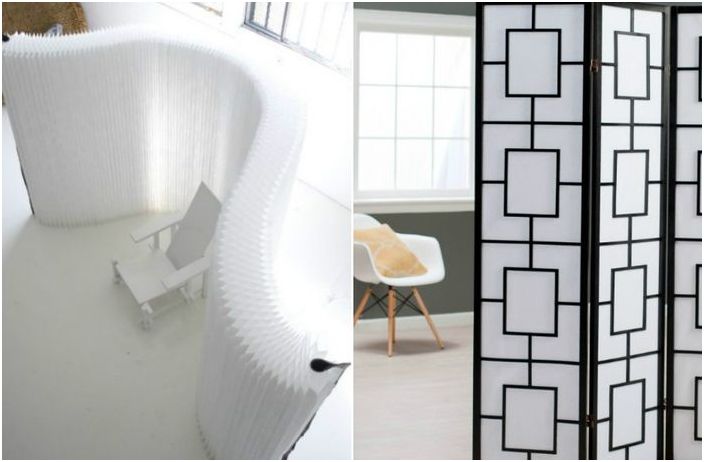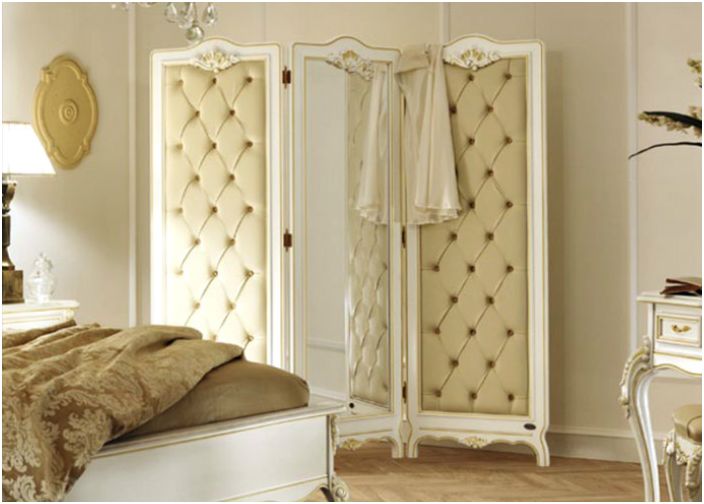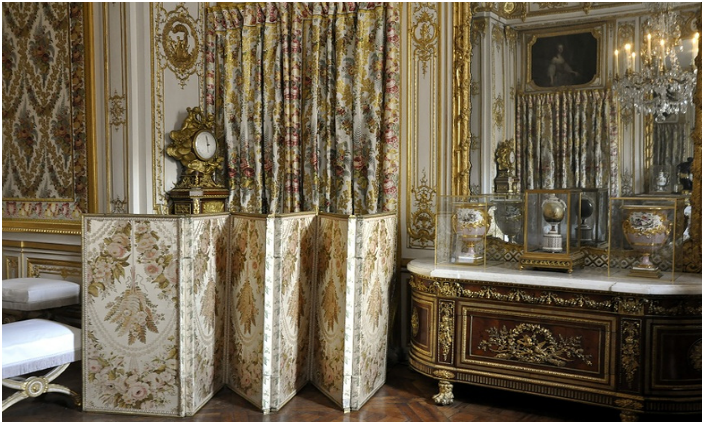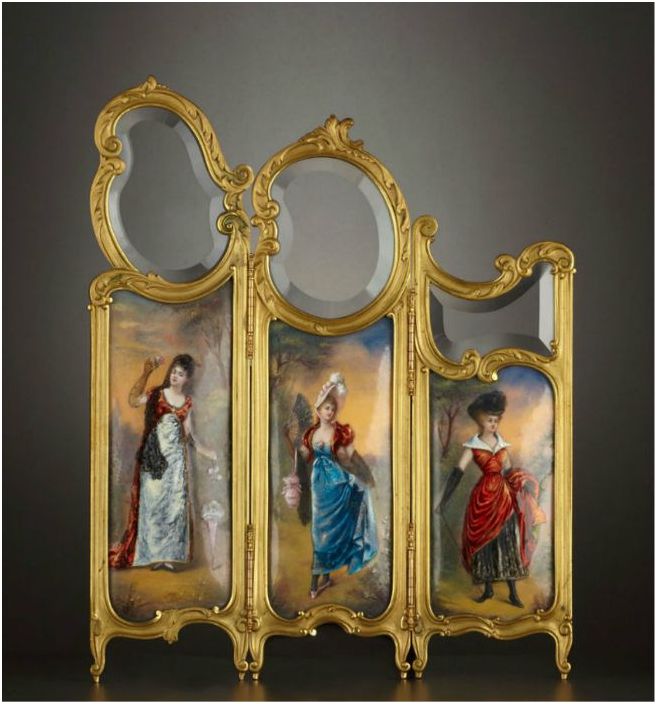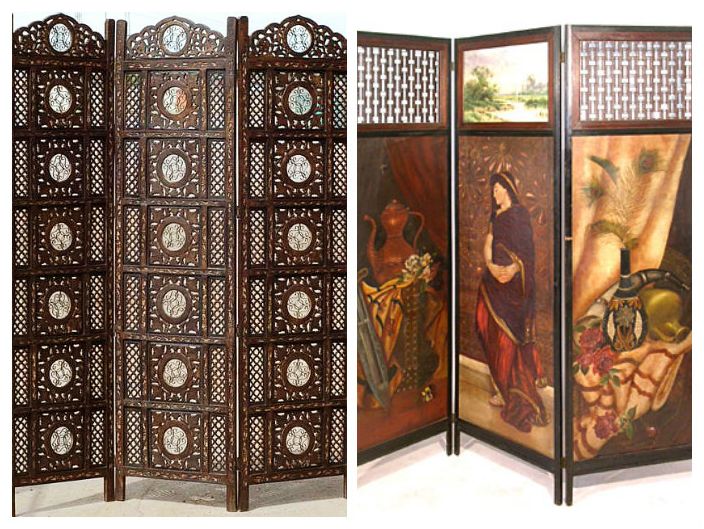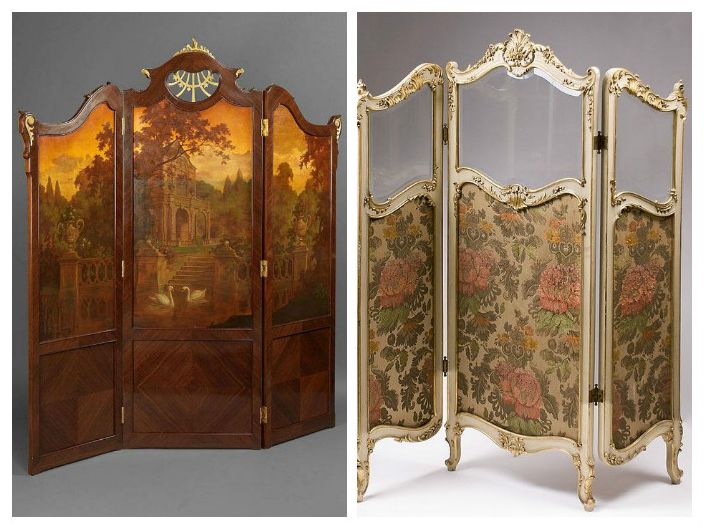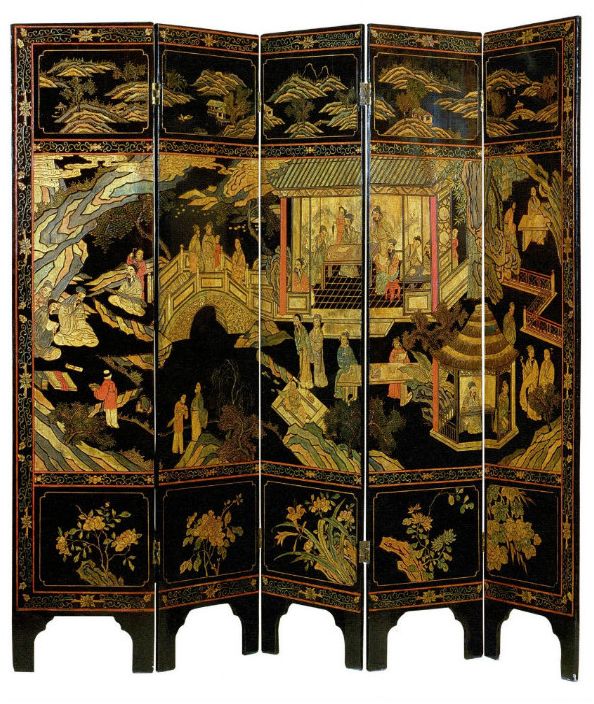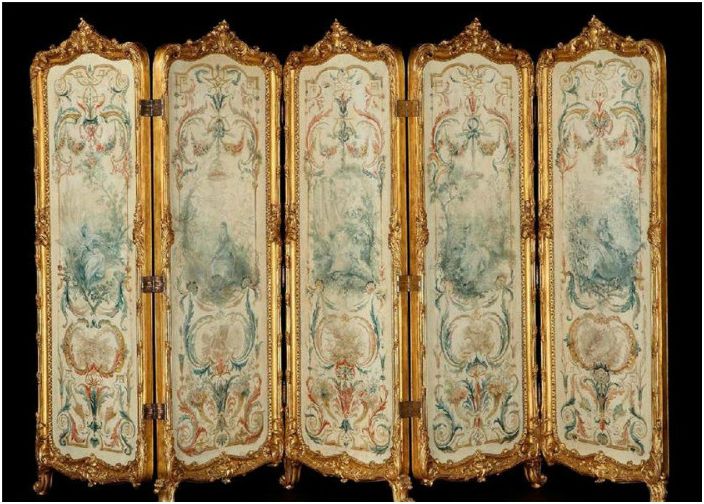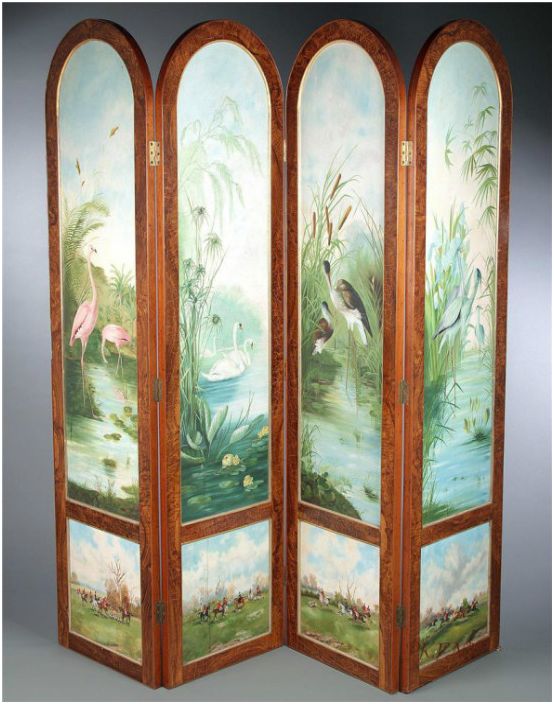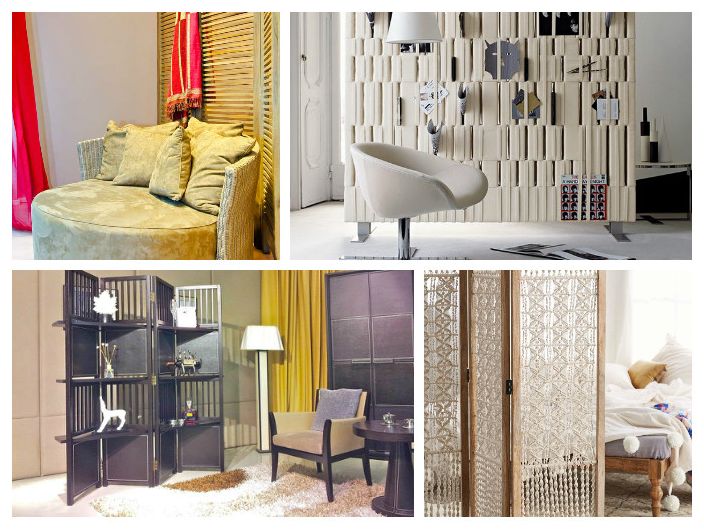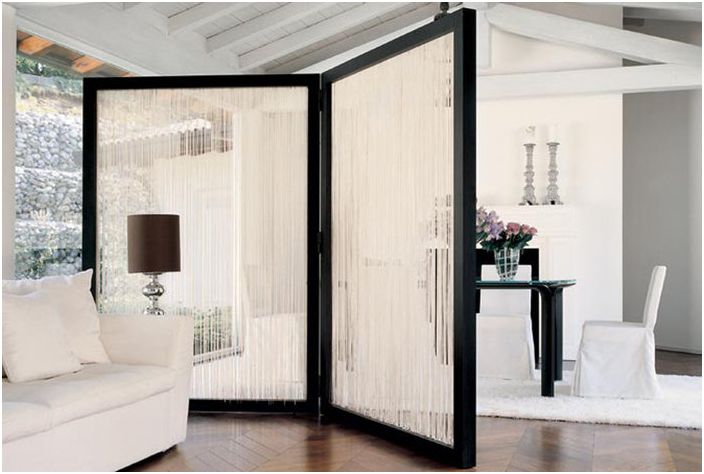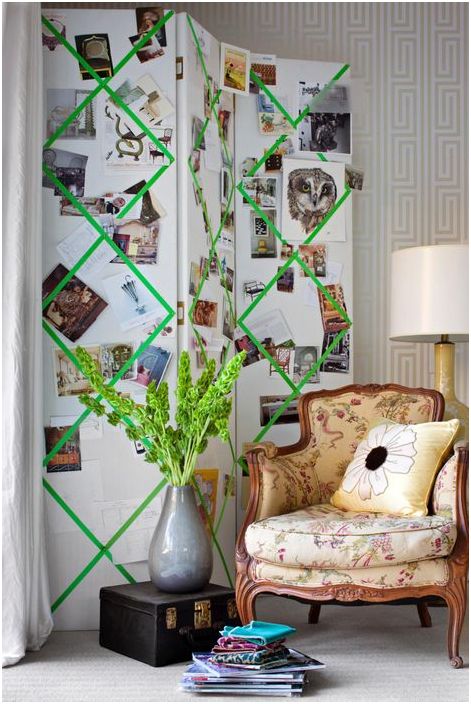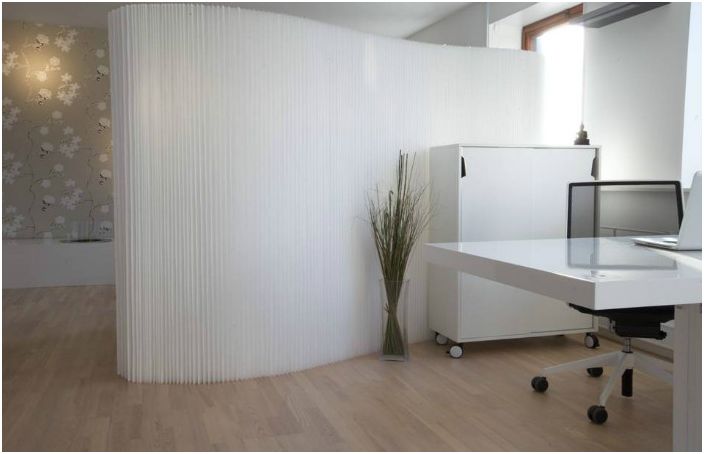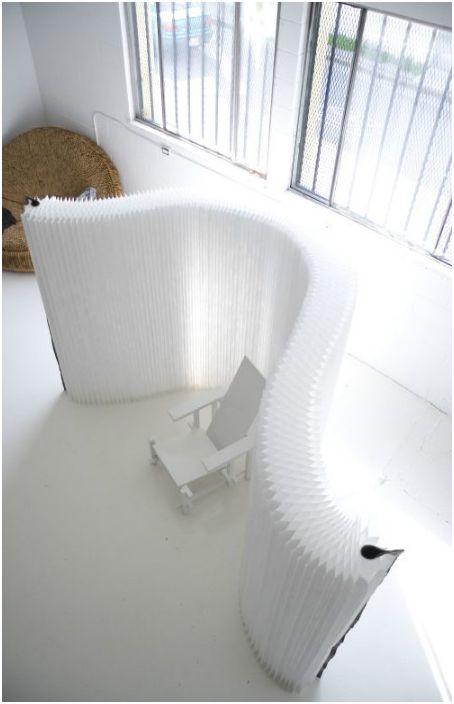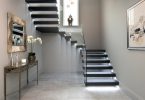Screens in the interior
The unfairly forgotten screen returns to the interiors again. What is its uniqueness and how modern designers have found its application? Why was a screen placed opposite the door in ancient China, and how did the ladies of the court use it? We found the answers to these questions!
Zoning element
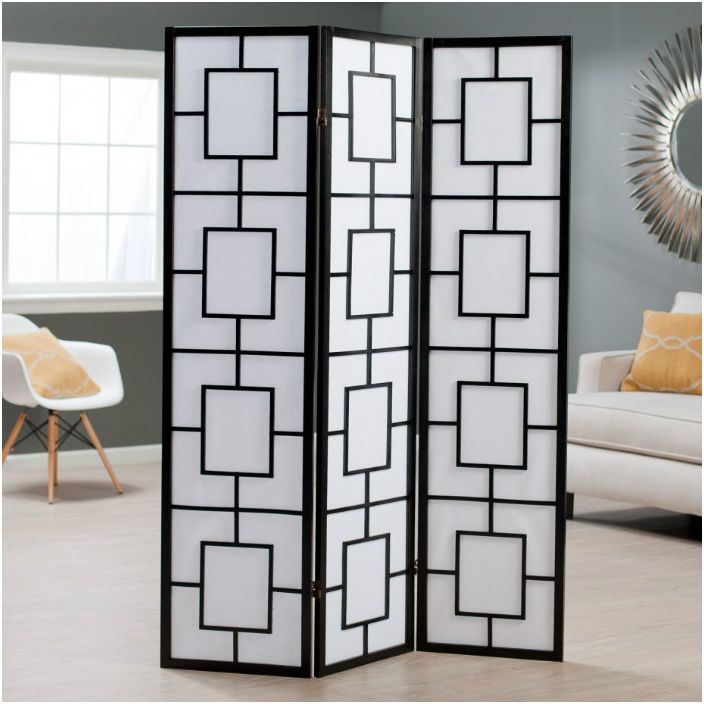
Mobile partition
Why did modern designers have an increased interest in this ancient piece of furniture? First of all, this happened due to the popularization of studio apartments, which in one way or another need zoning. The screen does just this function perfectly. This is a mobile partition that can separate part of the room: the dining room from the kitchen, the bedroom from the wardrobe. It is convenient to use both in spacious rooms and in small-sized rooms..
Screen-dressing room
In China (in the homeland of the screen) it is called a movable wall. Earlier, the ancient inhabitants put a screen opposite the front door. People believed that in this way they would be able to protect themselves from evil spirits..
Chinese screen
Translated from German, Schirm means protection, barrier. Fashion for everything oriental spread in Europe in the XIX-XX centuries, it was the peak of the popularity of screens. At that time, they served not only as a dividing wall. Screens performed mysterious functions and covered what outsiders should not have seen, for example, the ladies hid – behind them their cavaliers (lovers).
French screen
Oriental culture fashion spread to Europe
Openwork screens
Indian screens
An openwork screen is a highlight of Indian masters. Such models are intended more for interior decoration, and not in order to cover anything. They create the effect of airiness and weightlessness in the interior..
Screen as a work of art
Works of art
The screen is an ideal subject for design experiments. Its surface served as a painting canvas in China. Then artistic painting on screens became part of Japanese culture. The doors were made of wood and very durable paper (gumpi). Later, they created paintings with landscapes or images of sages on mother of pearl, leather, fabrics. Therefore, many screens consisted of a large number of panels. In panoramic products, the number of flaps could be up to 40 copies..
Screen with art painting
In classic Japanese screens, the plot is from right to left and at the bottom. This is due to the culture of Japan, according to tradition, the Japanese sat on the floor, and it is better to look at the images.
5-wing screen
By tradition, the Japanese were sitting on the floor, otherwise it’s better to look at the images
Key features
Unique, mobile, functional lightweight partition
Why is it easy to find an application for the screen, both in a large house and in a small apartment? Because it is a unique mobile partition that is easy to move, zone and decorate with it. Even students fell in love with the screen, with its help they have the opportunity to create a personal corner in limited conditions..
Screen in a modern interior
A practical and decorative piece of furniture
There are models equipped with additional shelves and drawers, which allows you to store small items and books in the screen. Some screens are equipped with a mirror, which is very convenient, especially for the dressing area..
There are designs that easily allow you to reduce or add the number of sashes, swap them.
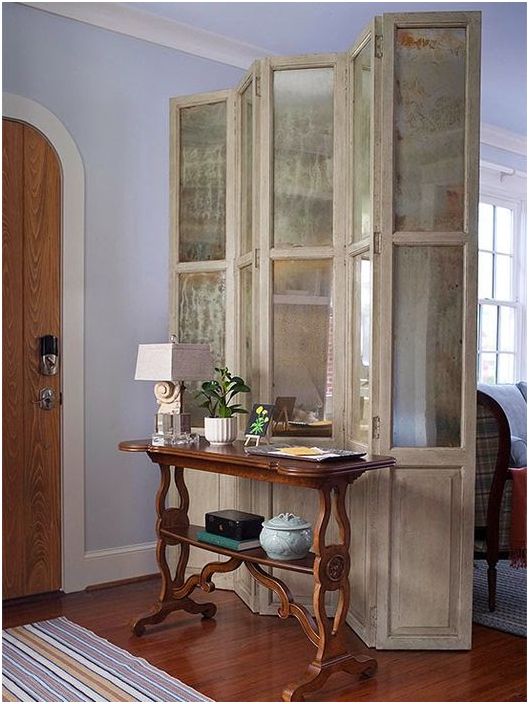
Screen as a zoning element
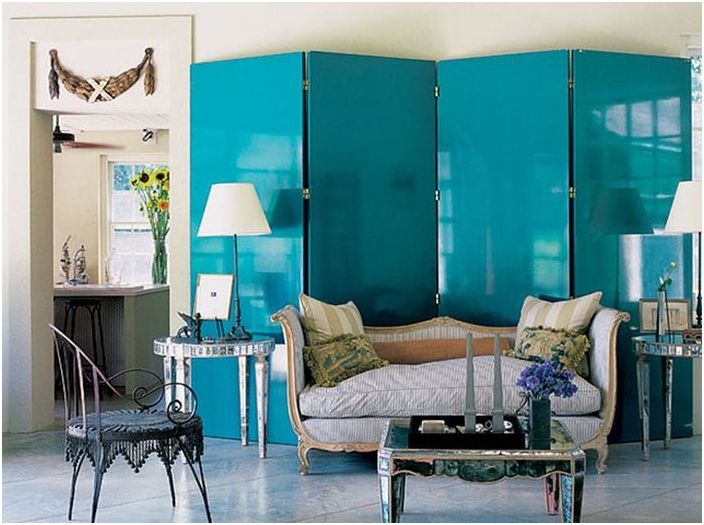
Stylish screen
Modern screen-book
Modern screen
Specialists from the Canadian design studio Molo have come up with a universal partition that can stretch up to 4.5 meters. And if necessary, shrink to the size of a small book. Non-woven textiles and kraft paper served as the material for creating a flexible screen-partition. Such modules are interconnected by secret fasteners. Manufacturers assure that the flexible screen is strong enough and has sound-absorbing properties..
The partition can stretch up to 4.5 meters
Continuing the theme: 15 partitions that are easy to make with your own hands. These tips will appeal to many, and will help make the interior exceptional..

